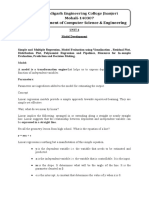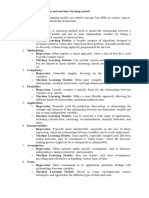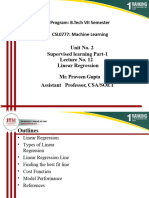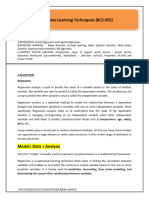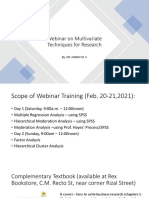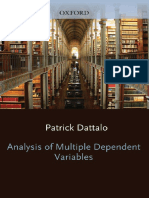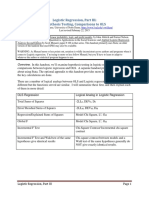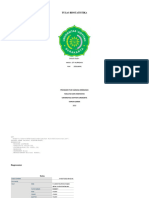0% found this document useful (0 votes)
11 views5 pagesLinear Regression in Machine Learning
Linear regression is a fundamental machine learning algorithm used for predictive analysis of continuous variables, establishing a linear relationship between dependent and independent variables. It can be classified into simple and multiple linear regression, with the goal of finding the best fit line that minimizes prediction error using methods like gradient descent and cost functions. Key assumptions for linear regression include linearity, no multicollinearity, homoscedasticity, normal distribution of errors, and no autocorrelation.
Uploaded by
dharsiniinisrahdCopyright
© © All Rights Reserved
We take content rights seriously. If you suspect this is your content, claim it here.
Available Formats
Download as DOC, PDF, TXT or read online on Scribd
0% found this document useful (0 votes)
11 views5 pagesLinear Regression in Machine Learning
Linear regression is a fundamental machine learning algorithm used for predictive analysis of continuous variables, establishing a linear relationship between dependent and independent variables. It can be classified into simple and multiple linear regression, with the goal of finding the best fit line that minimizes prediction error using methods like gradient descent and cost functions. Key assumptions for linear regression include linearity, no multicollinearity, homoscedasticity, normal distribution of errors, and no autocorrelation.
Uploaded by
dharsiniinisrahdCopyright
© © All Rights Reserved
We take content rights seriously. If you suspect this is your content, claim it here.
Available Formats
Download as DOC, PDF, TXT or read online on Scribd
/ 5









